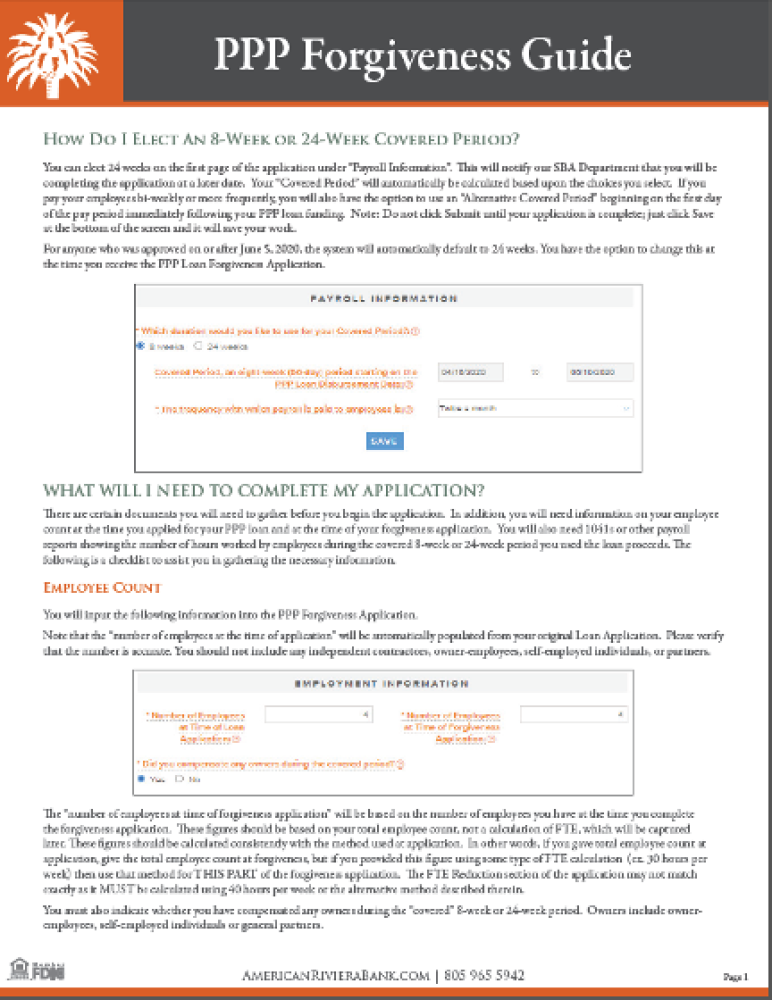

The Paycheck Protection Program (PPP) Flexibility act, which provided an alternative covered period of 24-weeks, also extended the application deadline to August 8, 2020. SBA is no longer accepting PPP loan applications at this time; however, Congress is currently in discussions regarding the possibility of a new stimulus package that may allow businesses hit hardest by the pandemic to apply for a second PPP loan or other similar loan stimulus.
We don’t know much at this point, but the latest industry information is that the loan stimulus would likely be available to smaller businesses than before, those with 200 – 300 or less employees, who have experienced a significant drop in revenues due to COVID-19-related closures.
In addition, you may have heard media hype about the Health, Economic Assistance, Liability Protection and Schools Act (HEALs Act), a Senate proposal for the follow-up to the CARES Act that would provide a streamlined PPP loan forgiveness process for loans of $2 million or less, with a one-page application/certification for loans of $150,000 or less. We still don’t know what traction this will have in Washington, but it is clear that there is still much left to debate before we can expect any definitive answers. In the meantime, SBA began accepting PPP Loan Forgiveness applications on August 10, 2020, which effectively converts these loans to forgivable grants, and we’ve opened our own application process here at American Riviera Bank. Regardless of what happens with a streamlined loan forgiveness process, you may already qualify for loan forgiveness using the EZ Loan Forgiveness Application if you’ve been able to
If you do not submit a loan forgiveness application within 10 months after the end of your loan forgiveness covered period you will be required to begin paying principal and interest at that time.
We encourage you to contact your financial advisor to determine the best timing to apply for loan forgiveness based on your individual situation.
We will continue to post updates on the latest developments as we receive more information on the PPP page of our website.
In addition to negotiations currently underway in Congress, the SBA has issued updates to their PPP Loan Forgiveness FAQs, and most recently provided some guidance on nonpayroll costs, which deviate a bit from prior guidance. Here we cover some of the highlights.
Are payroll costs incurred before the start of the covered period that I paid during the covered period eligible for loan forgiveness?
Yes. The Interim Final Rule on Loan Forgiveness issued on May 22, 2020 indicates that payroll costs “incurred but not paid during the Borrower’s last pay period of the Covered Period” can be included if paid “on or before the next regular payroll date”. However, the new issued by the SBA also clarify eligible business mortgage interest costs, eligible business rent or lease costs, and eligible business utility costs incurred prior to the Covered Period and paid during the Covered Period are eligible for loan forgiveness.
Example: A borrower’s 24-week Covered Period runs from April 20 through October 4. On May 4, the borrower receives its electricity bill for April. The borrower pays its April electricity bill on May 8. Although a portion of the electricity costs were incurred before the Covered Period, these electricity costs are eligible for loan forgiveness because they were paid during the Covered Period.
What is the deadline to apply for loan forgiveness?
According to the Interim Final Rule Revisions on Forgiveness and Loan Review, there is no “deadline”, but borrowers that do not submit a loan forgiveness application within 10 months after the end of their loan forgiveness covered period must begin paying principal and interest at that time.
Can I prepay nonpayroll expenses during the covered period and have them be eligible for loan forgiveness?
No. As we previously discussed, the Interim Final Rule issued by the SBA on Loan Forgiveness indicates that an eligible nonpayroll cost is one paid “during the Covered Period” or “incurred during the Covered Period and paid on or before the next regular billing date, even if the billing date is after the Covered Period”. In addition, as with payroll, we would have to wait for proof of payment prior to submitting your forgiveness application to the SBA.
While the rule indicates that nonpayroll costs can be paid “or” incurred and paid after the covered period, it appears you will not receive forgiveness consideration for prepaying such expenses during the Covered Period. In fact, the rule specifically notes that advance payments of mortgage interest are not eligible for loan forgiveness.
What happens if I received an EIDL after I applied for the PPP?
This is one of the biggest changes in recent SBA guidance. The CARES Act only contemplated refinancing EIDLs received before April 3; however, the latest FAQs on Loan Forgiveness indicate that SBA will deduct the amount of any Economic Injury Disaster Loan (EIDL) advance received by a PPP borrower from the forgiveness amount remitted to the lender.
At American Riviera Bank, we’re here to help in any way that we can. To that end, we encourage you to visit the PPP page on our website for answers to the most frequently asked questions about PPP loan forgiveness, and our PPP Loan Forgiveness Guide. Thanks for reading, and stay well!
